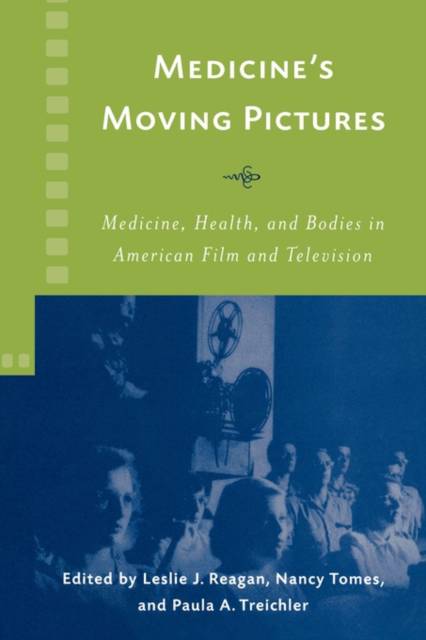
- Afhalen na 1 uur in een winkel met voorraad
- Gratis thuislevering in België vanaf € 30
- Ruim aanbod met 7 miljoen producten
- Afhalen na 1 uur in een winkel met voorraad
- Gratis thuislevering in België vanaf € 30
- Ruim aanbod met 7 miljoen producten
Zoeken
Medicine's Moving Pictures
Medicine, Health, and Bodies in American Film and Television
€ 62,95
+ 125 punten
Omschrijving
This groundbreaking book argues that health and medical media, with their unique goals and production values, constitute a rich cultural and historical archive and deserve greater scholarly attention. Original essays by leading media scholars and historians of medicine demonstrate that Americans throughout the twentieth century have learned about health, disease, medicine, and the human body from movies. Heroic doctors and patients fighting dread diseases have thrilled and moved audiences everywhere; amid changing media formats, medicine's moving pictures continue to educate, entertain, and help us understand the body's journey through life. Perennially popular, health and medical media are also complex texts reflecting many interests and constituencies including, notably, the U.S. medical profession, which has often sought, if not always successfully, to influence content, circulation, and meaning. Medicine's Moving Pictures makes clear that health and medical media representations are "more than illustrations," shows their power to shape health perceptions, practices, and policies, and identifies their social, cultural, and historical contexts. Contributors: Lisa Cartwright, Vanessa Northington Gamble, Rachel Gans-Boriskin, Valerie Hartouni, Susan E. Lederer, John Parascandola, Martin S. Pernick, Leslie J. Reagan, Naomi Rogers, Nancy Tomes, Paula A. Treichler, Joseph Turow Leslie J. Reagan is an associate professor at the University of Illinois, Urbana-Champaign; Nancy Tomes is a professor at Stony Brook University; Paula A. Treichler is a professor at the University of Illinois, Urbana-Champaign.
Specificaties
Betrokkenen
- Uitgeverij:
Inhoud
- Aantal bladzijden:
- 353
- Taal:
- Engels
- Reeks:
- Reeksnummer:
- nr. 10
Eigenschappen
- Productcode (EAN):
- 9781580463065
- Verschijningsdatum:
- 1/12/2008
- Uitvoering:
- Paperback
- Formaat:
- Trade paperback (VS)
- Afmetingen:
- 152 mm x 229 mm
- Gewicht:
- 589 g

Alleen bij Standaard Boekhandel
+ 125 punten op je klantenkaart van Standaard Boekhandel
Beoordelingen
We publiceren alleen reviews die voldoen aan de voorwaarden voor reviews. Bekijk onze voorwaarden voor reviews.







